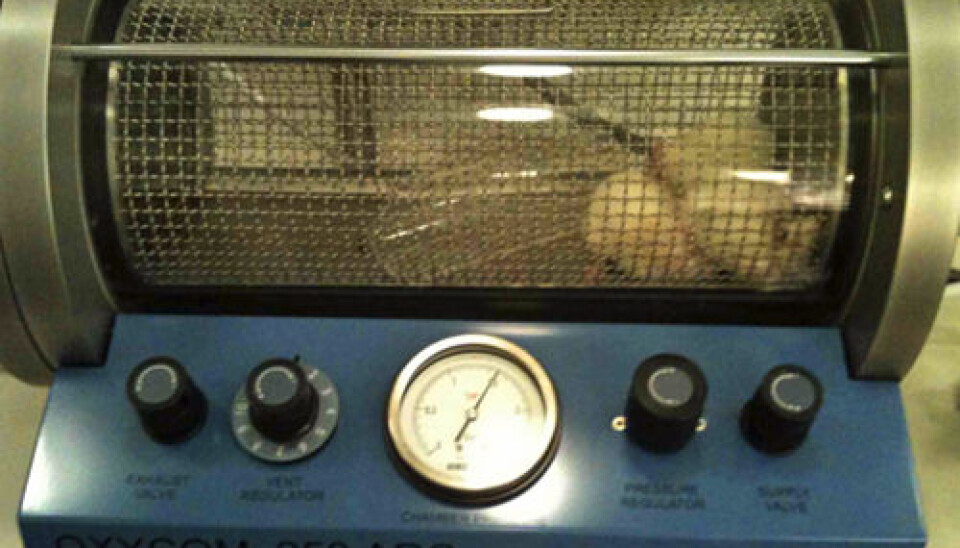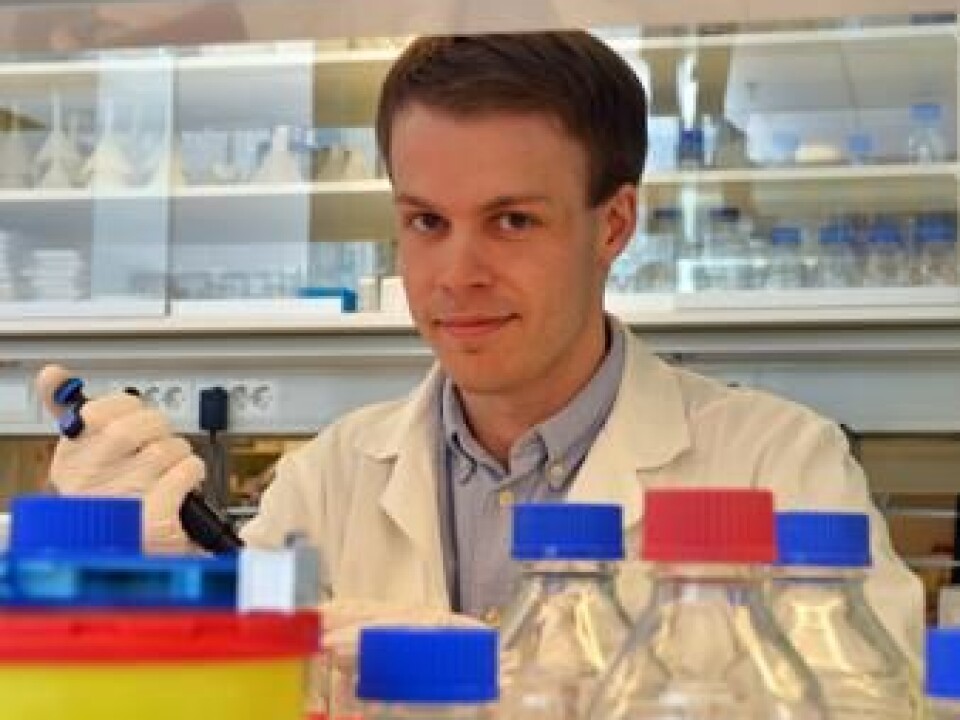
Pressuring radiation damaged bones to heal
Pressure chambers help patients who have suffered damage from radiotherapy treatment against cancer. Bones grow better under pressure.
Denne artikkelen er over ti år gammel og kan inneholde utdatert informasjon.
In a pressure chamber patients breathe pure oxygen while getting exposed to a pressure equivalent to what a diver would get 14 metres below the surface.
Patients with damaged tissue from radiation therapy are among those who can benefit from this treatment. In Norway it is administered at Haukeland University Hospital in Bergen.
The oxygen promotes growth of cells in the jaw and other bone tissue because it increases vascularization – the development of blood vessels.
“A good flow of blood and vascularisation is important for the growth of bone tissue because it carries new bone cells more efficiently to the injured area,” says Research Fellow Torbjørn Pedersen at the University of Bergen (UiB).

Pedersen and colleagues in Bergen and Stockholm have shown in a new study that bone tissue grows more prodigiously in a pressure chamber. The results will hopefully lead to better treatment.
The bends
This treatment in a pressure chamber is called hyperbaric oxygen therapy. In addition to improving treatment of damage caused by cancer treatment, it is also effective against foot damage suffered by diabetics and of course decompression sickness, also known as the bends.
The new results published in the International Journal of Oral & Maxillofacial Surgery are based on animal testing.
The effects on bone defects were studied by boring six-millimetre holes in the skulls of lab rats. Then the regrowth of cranium bone tissue was observed for over eight weeks.

The results were promising. The rats that breathed oxygen in a pressure chamber experienced better bone formation.
The tiny capillaries connecting to bone tissue are the key. These flourish with treatment in the pressure chamber.
500 a year
In Norway 500 persons a year are diagnosed with an oral cavity cancer. Radiotherapy is an important part of treatment.
But it can also injure healthy cells in the vicinity of a tumour. Bone cells in the jaw and mucous membranes can be damaged.
“Afterwards, radiotherapy patients can be plagued by dryness of the mouth, gingivitis and eventually the loss of teeth,” says Professor Emeritus Sølve Hellem of the Department of Clinical Dentistry at UiB.
He says that radiotherapy is now administered much more precisely than before. This reduces the danger of injury to healthy tissue. Nevertheless, there still is a risk of inadvertently irradiating and harming healthy cells in bone and other tissue.
Hellem participated with Pedersen in the new study.
“We want to find more out about the optimal treatment in the pressure chamber,” he says.
Good effect
“When we ask patients who have been treated for radiotherapy damage, 70 percent say they have experienced improvements,” says Chief Physician Guro of the Department for Hyperbaric Medicine at Haukeland.
Her department is responsible for the hyperbaric treatment in Norway. Last year 172 patients were treated.
Most of these had radiation damage from cancer treatment and among them were many who had cancers of the oral cavity or other parts of the head or throat region.
Vaagbø says no reliable figures are available about the numbers of cancer patients who suffer such side effects from radiotherapy.
Insufficiently methodical
She finds fault with studies and follow-ups of late reactions after radiotherapy, saying they tend to be unsystematic.
The figures provided fluctuate. However, it is possible that as many as one in ten suffers problems that are bad enough to warrant such treatment.
Vaagbø stresses that the road from research and animal testing to patient treatment is long and tedious. Patients often have complex problems and these results are not always relevant. Nevertheless, in the course of time research can help develop viable clinical methods.
“Maybe the medical profession can discover something which will contribute more toward tailoring individual treatment,” she says.
Stem cells
Radiation therapy damage is just one of the problems that is relevant for research on regeneration of bone tissue. Research in the field is being conducted across a broad front at the UiB’s Department of Clinical Dentistry.
Research is also underway on the use of stem cells to replace lost bone tissue.
“This is a really exciting field. It’s highly challenging and new developments are cropping up all the time,” says Research Fellow Torbjørn Pedersen. He and his colleagues received international attention last year for their results using stem cells.
It is conceivable that the methods under development in Bergen can be applied to all kinds of bone tissue, not just the jaw.
------------------------------
Read the Norwegian version of this article at forskning.no
Translated by: Glenn Ostling
































